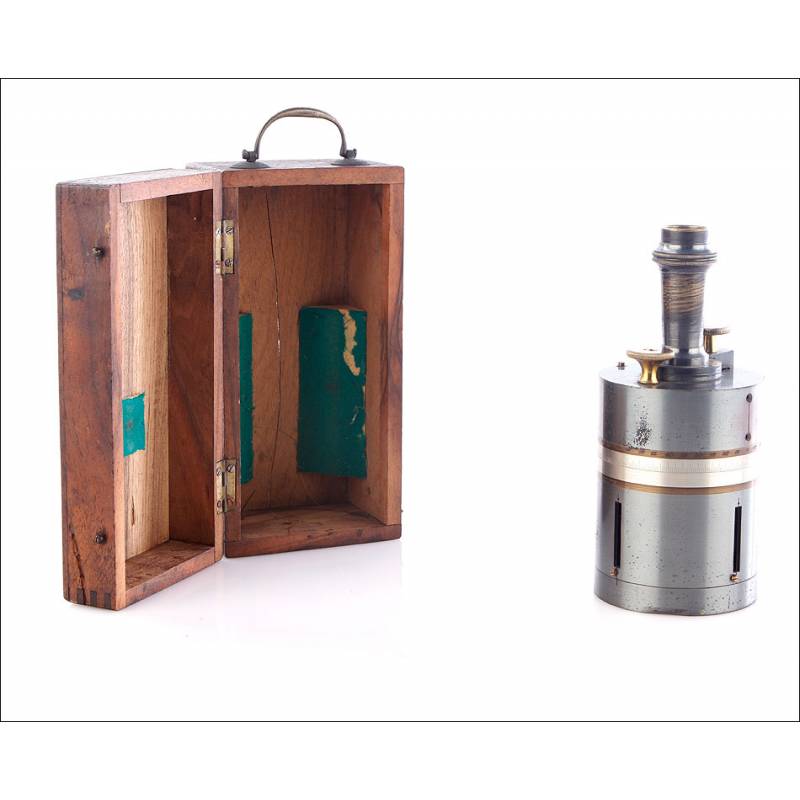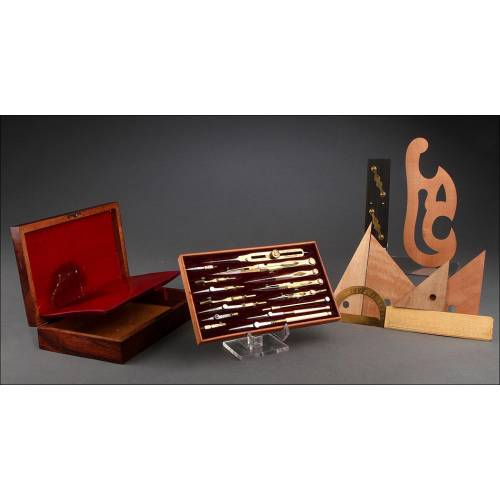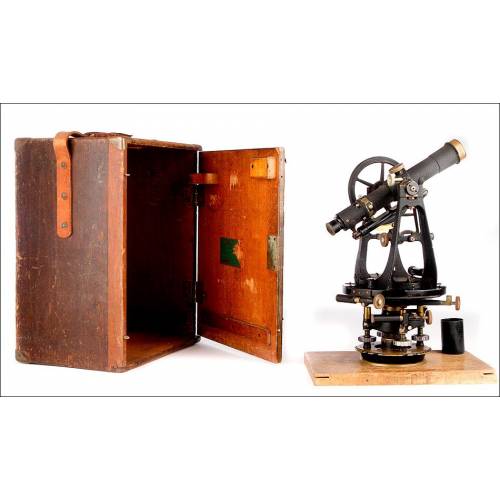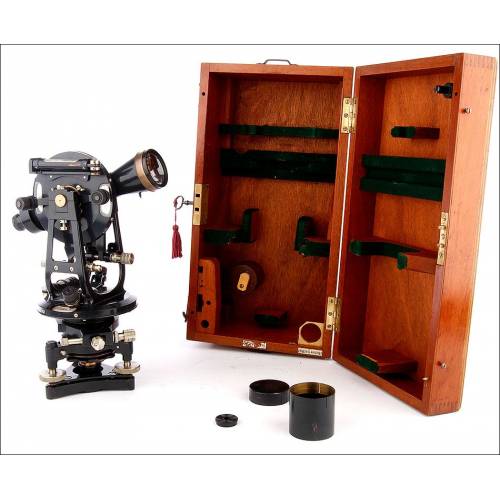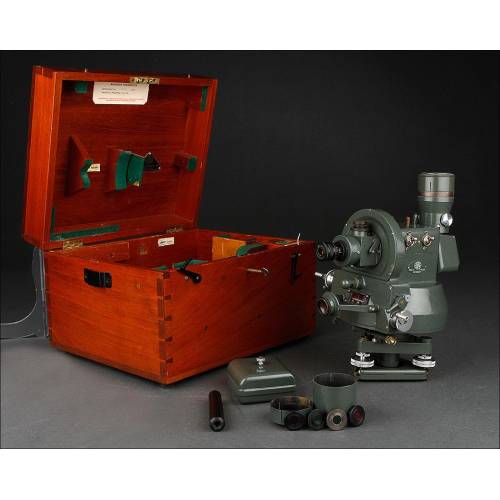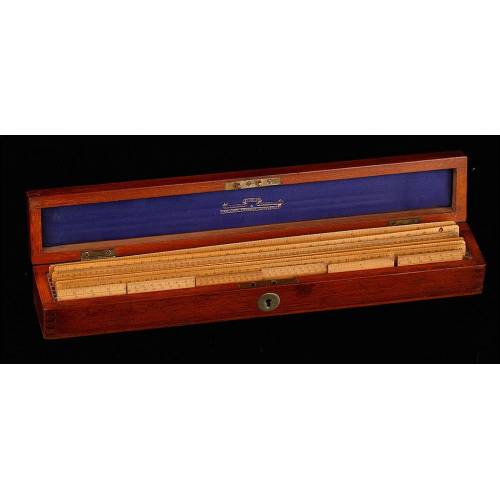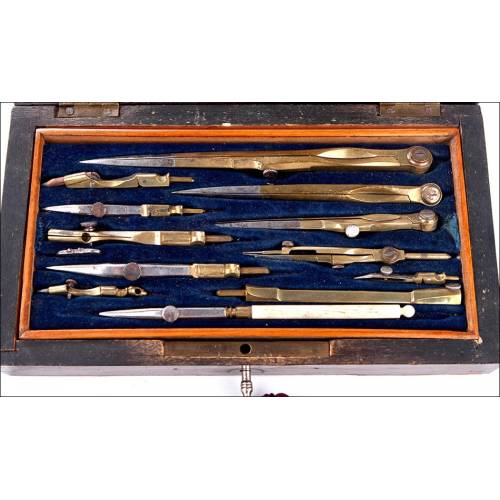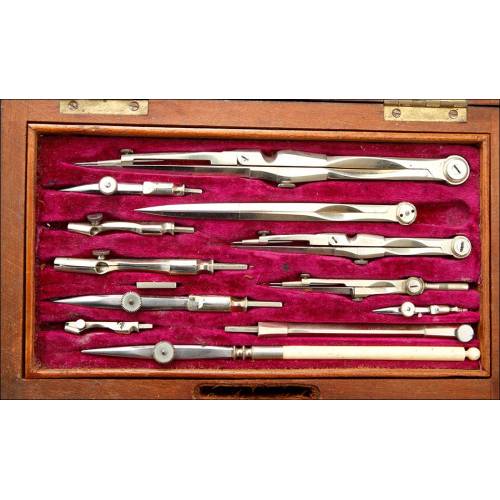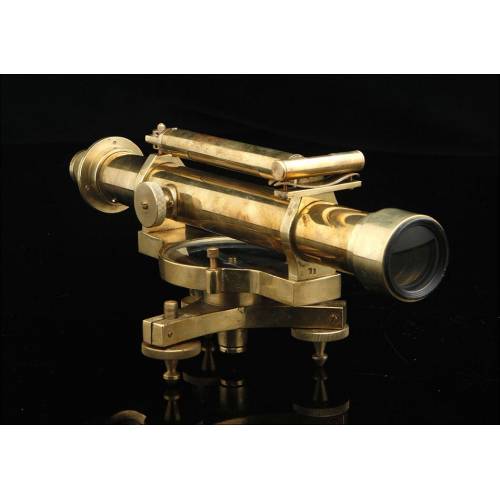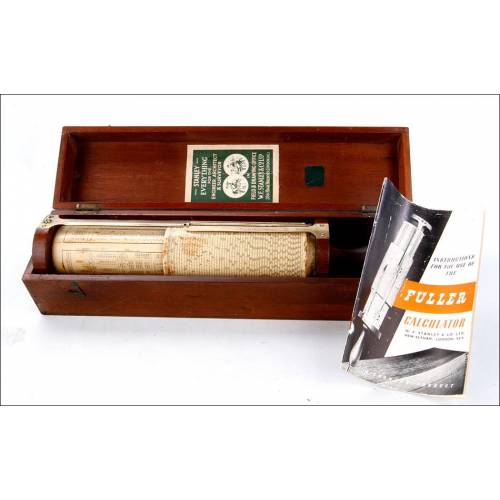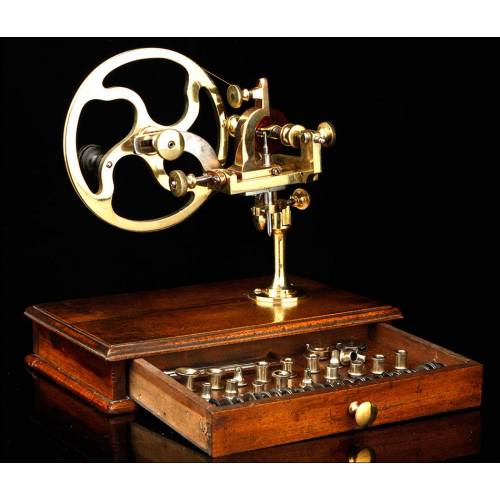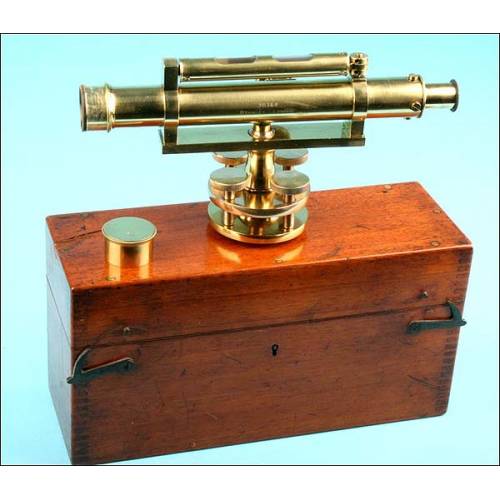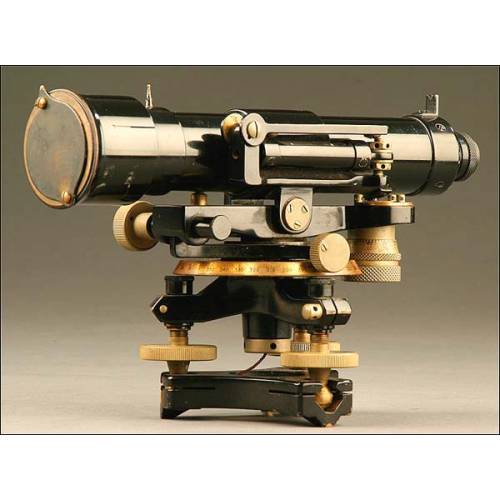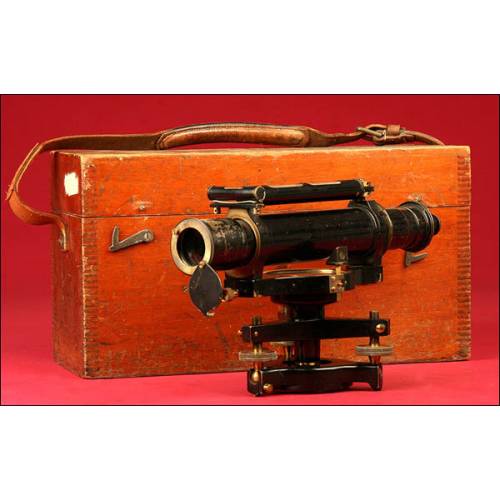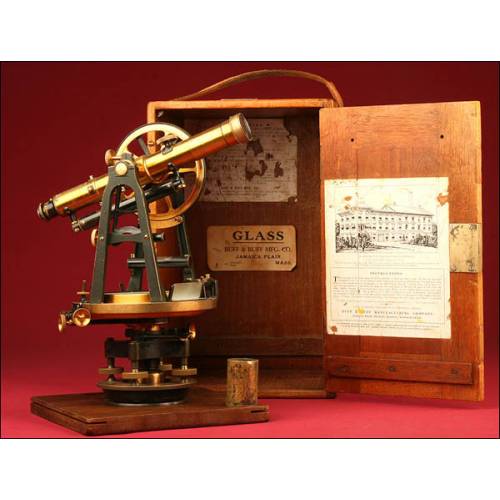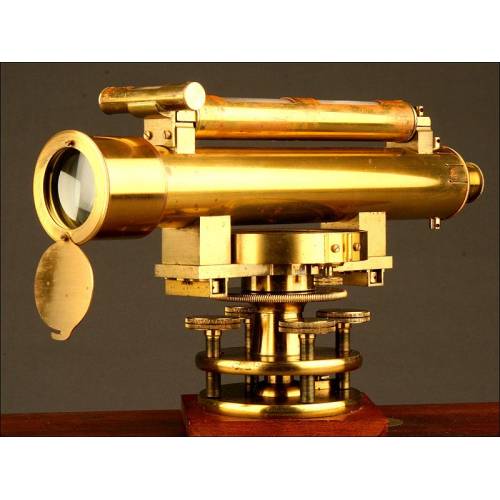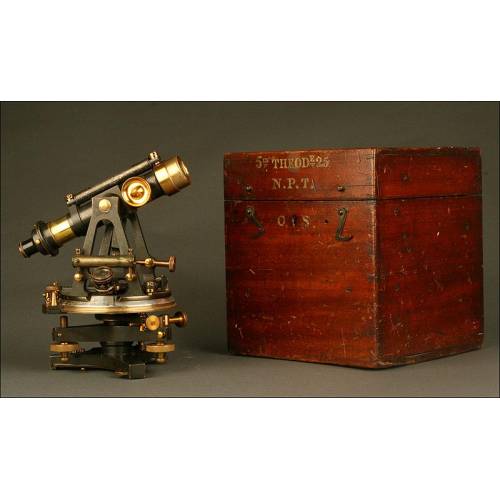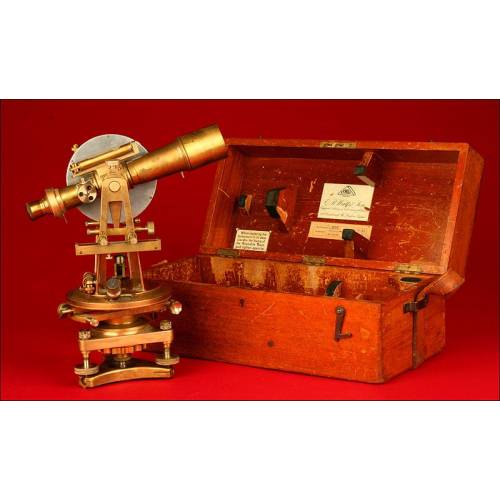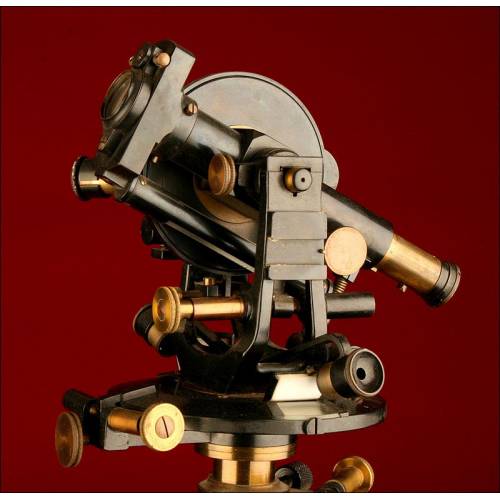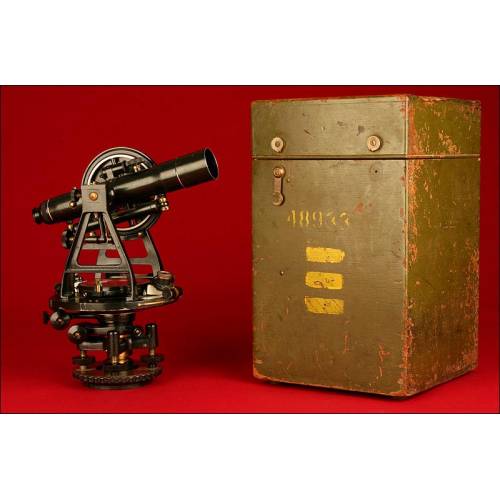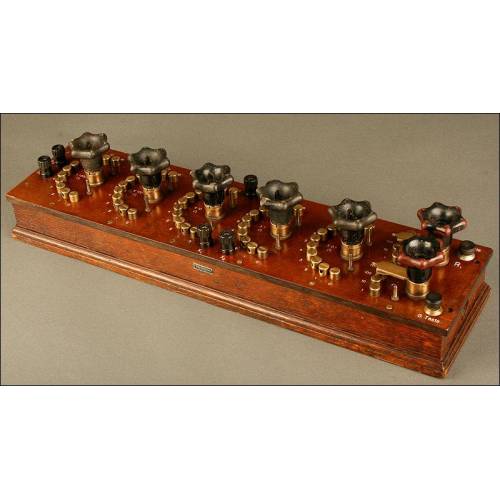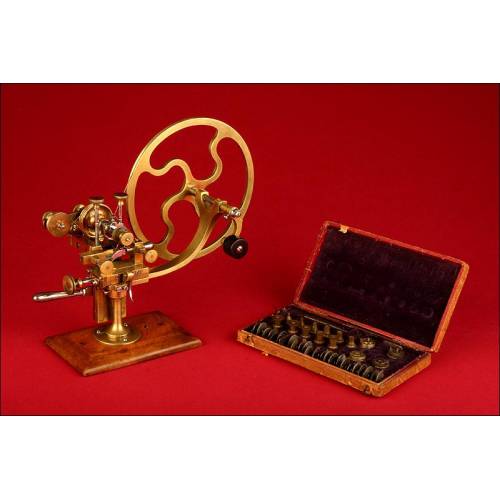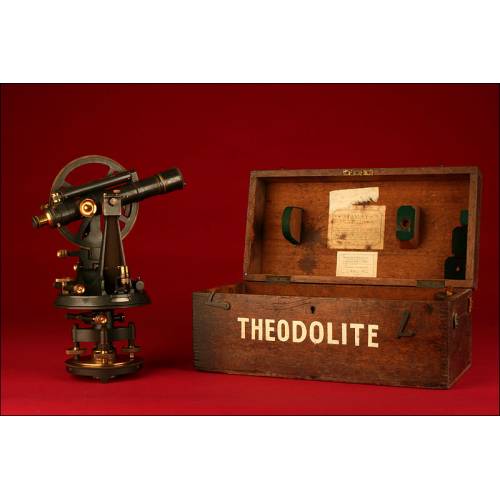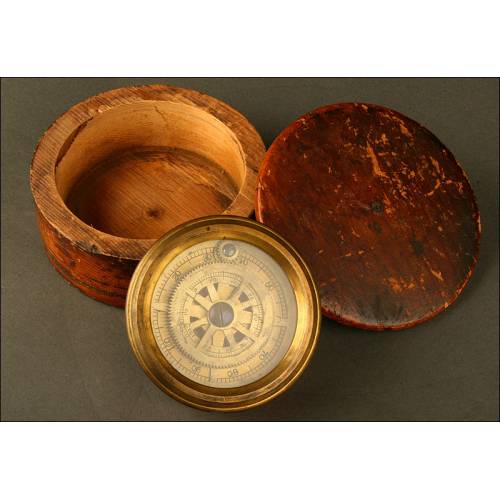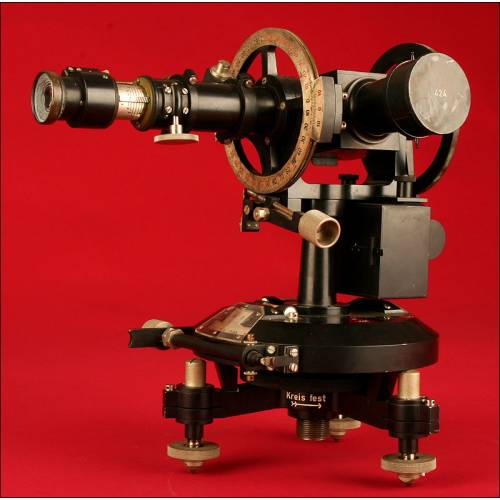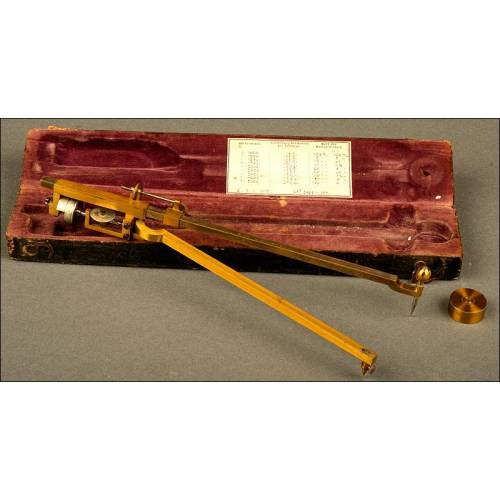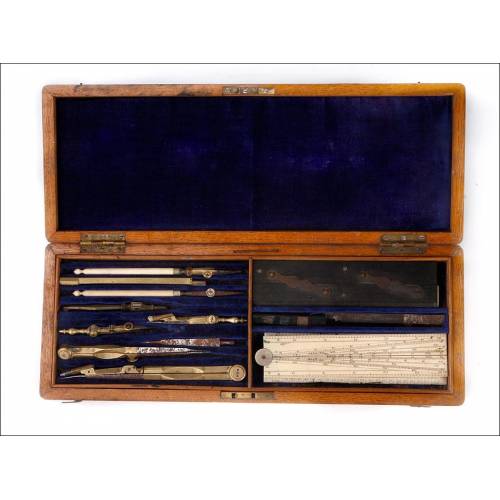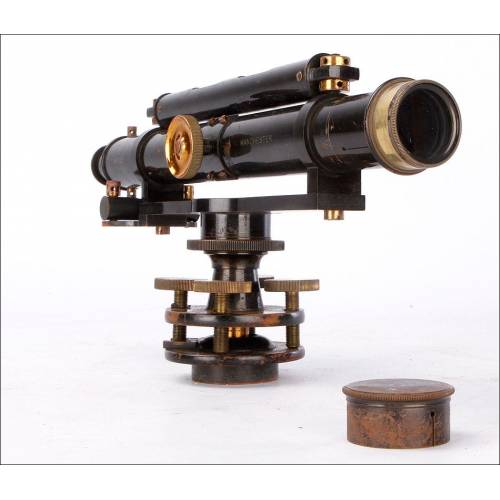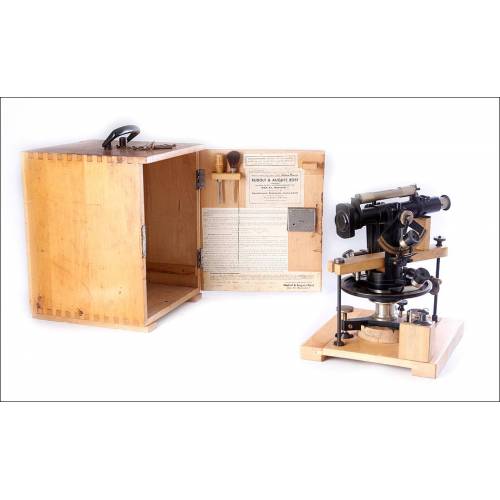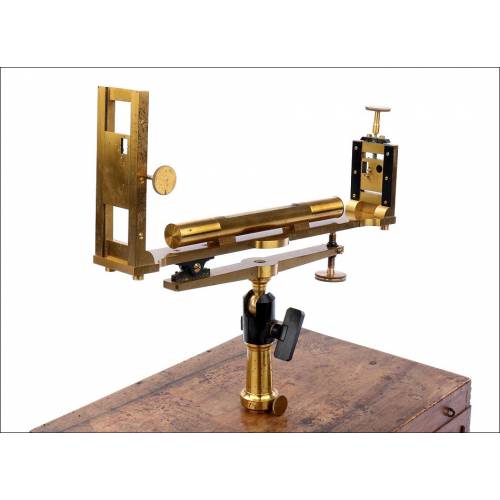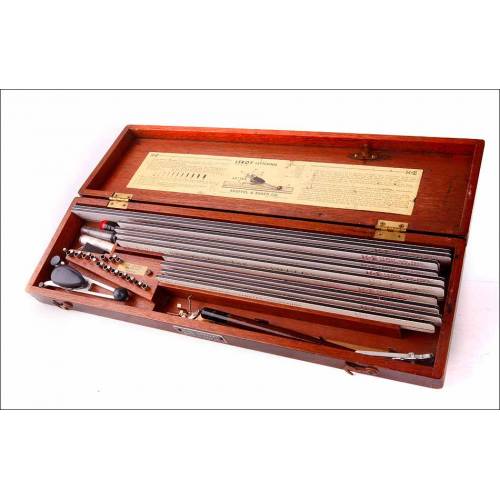C-239
Antique Pantograph and Compass, Circa 1900
Nostalgic antique pantograph with original period case. In working order. Very interesting piece for lovers of mechanical antiques.
Sold!
This fascinating instrument is an antique pantometer, a curious topographic device in very good condition. This pantometer is more than one hundred years old as it is dated in 1900. It is in working order too and comes in its original wooden case. We are looking at a very special piece that mixes a fine industrial style with a powerful evocative feeling. It is made of silvery metal and brass; the metal surfaces are wonderfully preserved and show scarcely any signs of rust or wear. The device that we can see in the photographs is composed of two stacked cylinders with the same radio. At one end we can see a cylindrical narrow base and at the other there is a compass in perfect working order. In order to use the pantometer, the base must be connected to a period tripod. This instrument also mounts a brass knob that makes it possible to move the lower cylinder and a screw to level it. The pantometer comes with a bristle coil to change the bristle piece when worn. The storing case is a solid wooden box with a lovely and sturdy rustic look. The wood is in great condition though its surface shows some signs of the trace of time and use that provide it with a lovely antique patina. It has dovetail joints and preserves the original shutting hooks. Every collector of technical antiques and scientific devices will appreciate this antique pantometers beauty and ancient age. It is a piece worth of inclusion in a technology museum. Measurements: Width: 3.1 in / 8 cm. Height: 7 in / 18 cm.History of the Pantometer The pantometer is a topographic surveying instrument resulting from the combination of a grooved angle-measuring device and a graphometer. The angle-measuring device was already known in the 16th century, when it eventually substituted its predecessor, the Roman groma. It is thought to have been invented by Athanasius Kircher who talked about it in his work Ars Magnesia. The pantometer is composed of two metal overlapped cylinders: the bottom one shows two grooves, one of them with a vertically-disposed thick hair in the middle. The top cylinder bears an engraved scale from 0 to 320 degrees; one of the grooves matches the 0. By moving the cylinders and working with the grooves, the nonius (Vernier scale), the leveling wheel and the compass, the pantometer makes it possible to measure angles for determining elevations, distances, etc.

